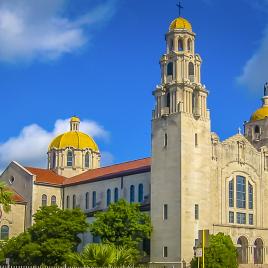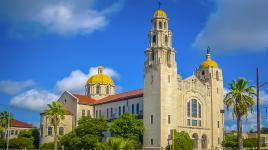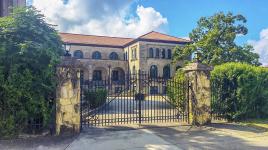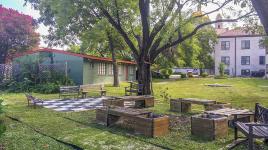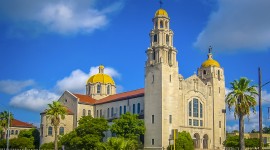Pioneer Information
Monnot was born in Salina, Kansas. Lacking little formal architectural training, he apprenticed himself to Hawk & Parr Architects in the early 1900s, opening a practice in Oklahoma City, Oklahoma, in 1919. Later partners and associates of Monnot & Monnot included a son, the late C.L. Monnot, Jr.; a grandson, Monnot III; and architects Robert C. Lammell and Roger H. Brawley, Jr.
From the outset, the elder Monnot—a devout Catholic—showed much interest and talent in designing places of worship. During the early decades of the twentieth century, when the Catholic church was building extensively across several southwestern states, Monnot was designated as the architect on a multitude of projects. His commissions included the Cathedral of Our Lady of Perpetual Help, seat of the Oklahoma City Archdiocese, as well as churches, monasteries, chapels, and convents in Missouri, Oklahoma, Texas, and Colorado. Monnot’s houses of worship are characterized by their mathematical precision and elaborate altars. The Corpus Christi Cathedral is a stylized interpretation of early Spanish missions and uniquely bears the coats of arms of two Roman bishops. The Basilica of the National Shrine of the Little Flower in San Antonio is stylistically a regional, eclectic expression of Beaux-Arts design, combining Mediterranean and Spanish motifs with more formal, Classical detailing.
By 1955, when Charles L. Monnot, Jr., took over the firm, the church-building boom had largely subsided, and the practice began to concentrate on other projects. Monnot, Sr., retired from practice and spent the last decade of his life in California until his death in 1962.




